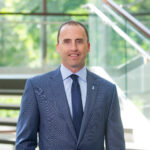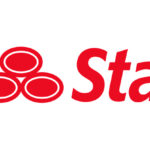Midway through a recent interview, the leader of a key business at The Hartford paused to ask a question relevant to executives at carriers that don’t have 11-digit premium volumes or capital levels like the Connecticut-based giant.
Executive Summary
The Hartford and other large carriers are competing in a technology arms race that may leave small, regional companies behind, Mo Tooker, the head of The Hartford’s Middle Market and Large Commercial business, told Carrier Management during a recent interview. At The Hartford, investments in technology and talent are moving process efficiencies and data firepower up market from the small commercial segment, he said, describing capabilities that include leveraging the Internet of Things to create customized products that respond to the real-time exposures of middle-market customers.“How does a small or regional company keep up with the scale of investments that a handful of the larger carriers can make?” asked Mo Tooker, head of Middle Market and Large Commercial business.
Tooker turned to the question about small carrier disadvantages after describing the investments The Hartford has made to transform its underwriting and claims processes in recent years in order to eliminate inefficiencies, react to customers’ needs and improve the jobs of Hartford professionals. “It’s an interesting topic because I do think you get to a place of scale that really allows you to outperform—to take advantage of data and data science and help your underwriters and claims adjusters in a way that changes the game altogether in the future.”
“This is a place where we will feel a bifurcation in the marketplace. There are only a handful of carriers that can make the investments that we’re describing here,” he said.
How much money is involved in these investments?
“I think hundreds of millions of dollars at the corporate level,” he said, without giving a specific spending figure for The Hartford. He did reference a recent article published by Carrier Management, in which competitor Travelers talked about spending a billion dollars annually on technology investments. “That is the type of scale necessary to respond to the demands from the consumer and also to really take advantage of the way the world has evolved from a data and modeling perspective.”
“It’s of that scale…You know the companies I’m talking about. There aren’t many that can keep up that level of investment year after year after year—and that creates a gap that grows larger year after year after year,” he said.
In July 2020, The Hartford announced a companywide operational transformation and cost reduction initiative known as Hartford Next, with plans to spend hundreds of millions of dollars on technology investments and employee severance costs associated with a planned workforce reduction. The goal of Hartford Next is to reduce insurance operating expenses by over $500 million annually, shaving 2-2.5 points off the P/C expense ratio reported in 2019.
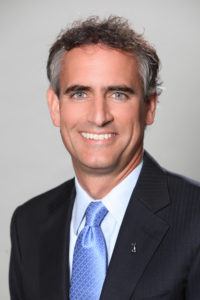 “Most of what you’re seeing the larger carriers working on is really what I would call augmented intelligence. We’re helping our adjusters or underwriters make decisions in a more informed fashion.”
“Most of what you’re seeing the larger carriers working on is really what I would call augmented intelligence. We’re helping our adjusters or underwriters make decisions in a more informed fashion.”
Mo Tooker, The Hartford
The carrier’s 2021 annual report reveals that $217 million of Hartford Next program costs were incurred in 2020 and 2021, with another $184 million anticipated in the next few years.
Usage-Based Commercial Insurance
Later, Tooker referred to a “nuclear arms race” in the industry—essentially, a technology battle that’s creating the ever-widening gap when asked to describe what he views as the most exciting technology The Hartford is using today.
“The hypothesis we’re starting with is that usage-based or behavioral-based insurance is right around the corner,” he said. “This is a place where I think this nuclear arms race and people’s ability to keep up is really important to think about.” Carriers that are better armed with customer data, and, in particular, with data coming from sensors and telematics devices, can “reflect the actual exposures that our customers have rather than proxies” in their product offerings, Tooker believes.
He used the example of rating general liability policies to explain the idea. “A lot of times, we rate off square footage or sales. But that’s a proxy for the real exposure. Think if you have occupancy sensors that are actually [recording] foot traffic. Now you’re getting to something that actually is related to the exposure that that industry or that subclass of business has.”
The Internet of Things and sensors “open up an incredible opportunity” for carriers that can make the right investments, he said. First, you have to be able to deploy the sensors” and experiment to understand what information they provide. “Then, you’ve got to figure out how to get all of that data that [sensors] are sending to you every second into a usable format,” Tooker said.
Experiments with that part of the process are underway at The Hartford right now, he said. “We’ve actually got a lot of test cases—even beyond test cases. We have more and more customers every day, where we’re actually connected to them and getting real-time information about their exposures. That’s only happened over the past 24 months,” he said.
At The Hartford, a third key to making the near-term future vision a reality was the acquisition of an InsurTech called Y-Risk four years ago, which didn’t add significant premiums to the carrier’s books but did bring more power to the arms race. “They had started to think about how to do insurance for the sharing economy,” bringing with them not just new technology and a new business model but also incredible amounts of data. The Hartford’s Middle Market and Large Commercial team is now leveraging the data to design customized usage-based and behavior-based insurance products.
“That is the frontier right now. What can the sensors bring you? How can you harness the data, and then how can you design products?”
While this is a place in the commercial lines arena where The Hartford may be a step in front of similar-sized competitors, Tooker isn’t complacent. “If we don’t keep moving, I know that many people will catch up because it’s such an important concept for the industry to work on.”
Process and Product Transformations
The Hartford has been moving for a while, with its Middle Market and Large Commercial business unit not just learning from InsurTech Y-Risk but also applying lessons learned in The Hartford’s Small Commercial businesses to process transformations. And a major acquisition in 2019—the $2.1 billion deal for specialty insurer Navigators Group—has allowed the carrier to bring more products to business customers.
“There is too much paper, too much process, too much inefficiency in the middle and large commercial space,” Tooker said, explaining why The Hartford has pushed for process transformation in recent years.
“Our second hypothesis is that our customers and brokers really want, especially in the middle-market space, to buy more products from a more limited number of carriers,” he said. “If they could have a one-stop shop, they would do that in more situations.”
The Middle Market and Large Commercial business that Tooker heads up offers core P/C lines, such as auto, workers compensation, general liability, property and umbrella, aimed at the middle and large commercial customer segment. Complementing that business, The Hartford’s Global Specialty business, borne out of the Navigators deal, brings all of the other products to the same customer base, such as financial lines, ocean marine, environmental insurance and surety.
“We are very much partner organizations. We’re going after the same customers,” Tooker said.
“For the first time, we can stand in front of our agents and brokers, and in front of the market, and say that we have all the products necessary…We understand you, Mr. or Mrs. Customer, and have the specialization to be able to understand what you need, and then the ability to bring you the products that support those needs.”
“That’s a major transformation for The Hartford because we didn’t have everything in the building [before], and now we can compete with some of our more diverse competitors.” Highlighting an advantage over P/C-only competitors, Tooker noted The Hartford’s capabilities in group benefits as well. “Think accident and health, and some of the voluntary benefits products…We are the only P/ C carrier in the marketplace that also has a group benefits offering,” he reported.
Operational Efficiency and Data Fire Power
Describing the second transformation aimed at increasing operational efficiency, Tooker said “that one really is about us building from the incredible base we have in Small Commercial,” referring to The Hartford’s significant digital capabilities for small business customers. “We’re trying to build on that strength and take it up market into the middle-market space, and certainly into the smaller end of large commercial over time.”
“We do believe [that] all the demands for speed and efficiency that we’re seeing in small commercial right now, all the demands that we feel for speed and efficiency in our private lives, will come into the middle-market space. And in fact, those demands are already there.”
As an example, he said, “We now can take into our systems anything that our agents and brokers send us without anybody touching that—without somebody onshore or offshore having to do that work.” That previously was only possible in Small Commercial. It means quicker responses to agents and brokers, benefiting both the distribution partners and ultimate customers.
There are also places where The Hartford is building different technology for middle-market and large commercial. Tooker explained, “In the small commercial space, we ask agents and brokers to put their information into our portal, and it’s an on-the-glass transaction—kind of a straight-through process. But in the middle-market space, agents and brokers don’t necessarily want to enter in their information for seven different carriers. They don’t really have the same margins on the business to do that work.”
“That’s really where we’re trying to meet brokers and agents where they are. We are building proprietary technology for the middle-market space” while also leveraging insights from the small commercial digital transformation journey.
Beyond building platforms that respond directly to the evolving needs of customers and distribution partners, The Hartford’s technology spending is reaping internal benefits—making claims and underwriting professionals more proficient. With data from agents and brokers now ingested in usable format, The Hartford can “multiply the firepower” of that data by also bringing in third-party data, Tooker said.
Referring to a major investment that The Hartford made in a Guidewire claims system a decade ago, he said, “We have a feedback loop that’s getting back to underwriting and actuarial and product very, very quickly because of the data we collect. Over the years, the feedback loop has been refined to a point where I think our claims leadership would say we’re seeing smoke before there’s a fire.”
In addition to the benefit of spotting emerging risk and claims trends, The Hartford is leveraging its IT investments to triage workflows. “Because of the data and the models that we’ve built off that new system, we are now able to point our claims handlers to those areas that really need their attention. And [for] those where a model works fairly well or really well, we can automate processes…”
“We have taken cost out. Adjusters are working on claims [where] they can really add value. [And] those that really can go straight through are coming off their desks.”
The story similar in underwriting. “Now that we’ve harnessed the data, now that we have some models and analytics and data science models firing, we are pointing underwriters toward those risks where they should be spending more of their time and [identifying] risks that we believe are less complex and able to go through in a less hands-on process.
“That has not been done in the middle-market space in a widespread fashion,” he said, introducing his comments about the bifurcation between large carriers and smaller, regional competitors. “It will transform the underwriting job,” said Tooker, a former chief underwriting officer for The Hartford who started his 30-year career as a property facultative reinsurance underwriter for General Re. “Most of what you’re seeing the larger carriers working on is really what I would call augmented intelligence. We’re helping our adjusters or underwriters make decisions in a more informed fashion.”
“And then I do think over time the industry will get to what truly is artificial intelligence,” he added, looking out into the future of commercial insurance.
On the claims front, a newer investment at The Hartford—in the workers compensation area—isn’t putting money directly into data or IT but instead builds upon prior spending. “We are now trying to build a broader stable of injury prevention services,” Tooker said.
With the claims system “firing early warning signs, we can see where the injuries are happening and when they are happening. So, for example, with one of our major customers we have now, we’re starting to open up clinics on the site of construction sites.”
“Think about it. An insurance company is providing an onsite clinic…When [a worker has] a niggling injury, is not feeling well or something just happened, the speed really matters in terms of getting a diagnosis and making sure that injured worker is looked after quickly,” he said, noting that the early interventions of nurse clinicians can significantly lower an insured’s total cost of risk.
The professionals working in the onsite clinics could be employees of The Hartford or employees of vendors that the carrier works with to ensure it can scale quickly, he said.
Preparing the Workforce
On the talent front, Tooker said The Hartford has made a major investment over the past five years to bring on specialized underwriting, claims and risk engineering professionals who understand particular industry verticals to the Middle Market and Large Commercial business. For example, he said the carrier has life sciences underwriters that specialize in life sciences risks exclusively—”because those customers and brokers are demanding that they have somebody sitting across from the table from them who understands their business.”
Another hiring theme relates to data engineers and analytics staff— “people who can help us think about leading with data,” Tooker said. And The Hartford has had to make investments in change management, he confirmed. “For every dollar of [technology] investment you have to spend, you probably need another dollar to help prepare people for what’s coming and to help them be comfortable with what’s coming.”
While The Hartford and other carriers invested in talent in recent years, they have also reduced costs with reductions in force. At The Hartford, the reduction was part of the Hartford Next initiative.
“You’ve always got to be looking strategically at where you’re going and whether or not you’re creating enough resources for what you need tomorrow,” Tooker said. “So, I looked at the entire Hartford Next effort as a way to free up dollars [and] people to be able to invest in what we need tomorrow.”
In Middle and Large Commercial, as a part of the strategy, leaders looked at the structure to understand where investments in automating processes meant fewer people were needed. “What it allows us to do is to invest in actuarial talent, data science, data engineers…There were some numbers we shared publicly which were important” about workforce cuts. “But I think it’s also really about enabling us to think about what’s around the corner and making sure we have the talent to do that.”
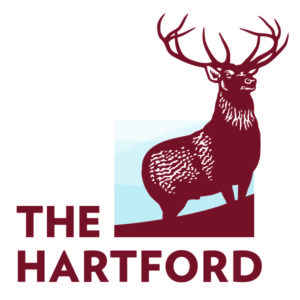 “That ‘front foot’ metaphor is what I talk to my team about because we have done so much work over the past three, four, five, 10 years… 2022 for me is really about execution and being in the market and trying to solve problems,” Tooker said.
“That ‘front foot’ metaphor is what I talk to my team about because we have done so much work over the past three, four, five, 10 years… 2022 for me is really about execution and being in the market and trying to solve problems,” Tooker said.Asked about the hot topic of retaining talent during the “Great Resignation,” Tooker said The Hartford has reported retention numbers that are better than competitors. “But it’s not going away, and it’s something that will remain a challenge because longer-term supply-and-demand issues do not change” across the industry, he said, referring to the fact that carriers and brokers alike have double-digit business growth targets, which drive the need for talent.
As for strategies to retain talent, Tooker said he believes culture is an underplayed one. “Obviously there’s a compensation lever. You’ve got to be competitive. And I don’t want to minimize that because the market is moving on that front, too. But I find, increasingly every day, the culture is what is driving people to stay or to come.”
“What is my career opportunity? How am I treated as an individual? How does the company think about D, E and I? How does the company think about its purpose in society? How does the company think about the environment?” Those are the key culture questions that candidates think about, Tooker said.
“I haven’t been at The Hartford forever, but I am grateful for how hard The Hartford has worked over decades to get the brand, the ESG grounding, our commitment to the community, the commitment to the environment, because all of those things help in this equation. And I would be really worried if I was at a place that’s just starting that journey because it really matters.”
Asked about what’s ahead for The Hartford in 2022, Tooker stressed the idea that The Hartford isn’t at the start of its operational and product transformation journeys.
“The biggest thing I’d like people to know is that we are on the front foot as a company and [that] the investments that we’ve made over the past whatever number of years just allow us to be able to be proactive with our customers and agents,” he concluded. “For me, 2022 is really about the fact that we’re not cleaning up anything in Middle and Large Commercial. We don’t have any book problems. We don’t have acquisitions to digest. The book is healthy, and we just can really now be on the front foot with some of these innovative ideas,” he said.
“That ‘front foot’ metaphor is what I talk to my team about because we have done so much work over the past three, four, five, 10 years to enable us to do that. 2022 for me is really about execution and being in the market and trying to solve problems,” Tooker concluded.





















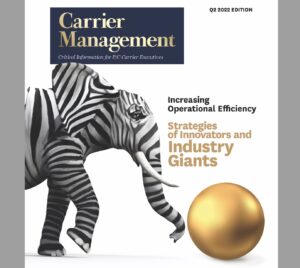
 Police Recover Swallowed Fabergé Pendant 6 Days After it Was Stolen
Police Recover Swallowed Fabergé Pendant 6 Days After it Was Stolen  New York Times Sues Perplexity AI for ‘Illegal’ Copying of Content
New York Times Sues Perplexity AI for ‘Illegal’ Copying of Content  Water Leaks, Frozen Pipes Top List of Small Business Claims: The Hartford
Water Leaks, Frozen Pipes Top List of Small Business Claims: The Hartford  Global Warming Likely to Push Future Hurricane Seasons to Extremes: Study
Global Warming Likely to Push Future Hurricane Seasons to Extremes: Study 

